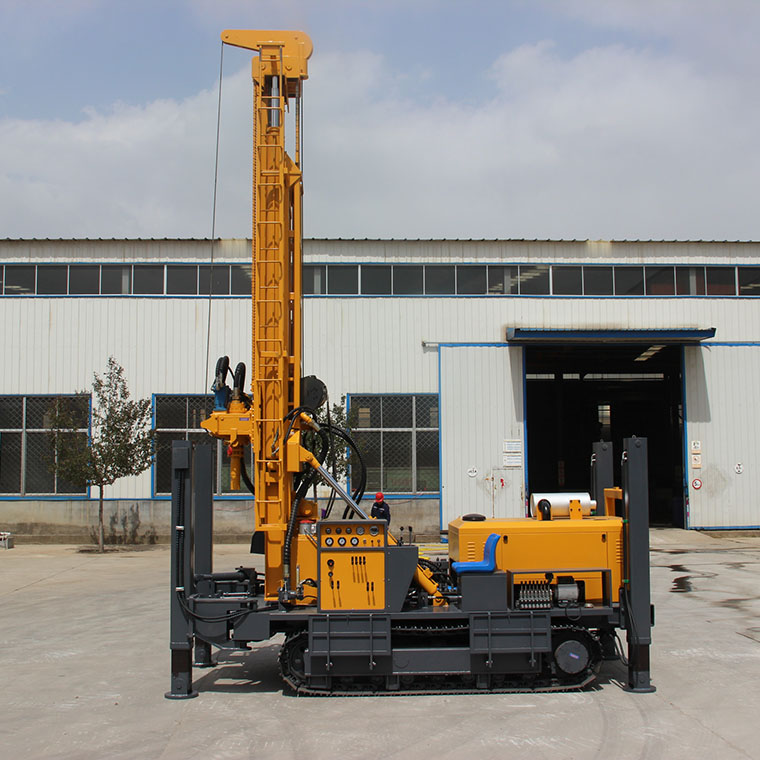The operation techniques of crawler water well drilling rig include the following aspects:
Equipment inspection: before the operation, carefully inspect all parts of the drilling rig, including the hydraulic system, tracks, drill bits, etc., to ensure that there is no damage or leakage.
Stable foundation: Ensure that the drilling rig operates on level and stable ground to avoid tilting or sinking, which may affect operational safety.
Selection of drilling location: Choose a suitable drilling location, make sure the ground is solid and flat, and avoid unstable equipment due to uneven ground, which will affect operation safety.
Drilling parameter setting: set up the drilling parameters of the crawler water well drilling rig according to the requirements of drilling well depth and diameter, including rotational speed, feeding speed, drilling pressure, etc.
Drilling process control: During the drilling process, the operator needs to reasonably control the drilling speed and feed force according to the geological condition and equipment feedback to ensure the drilling quality and equipment safety.
Operation specification: Familiarize yourself with the operation manual of the drilling rig and master the functions of each control button to ensure that the operation is carried out in accordance with the specification.
Control the speed: Keep the appropriate drilling speed, too fast will lead to increased wear of the drill bit, too slow will affect the working efficiency. Adjust flexibly according to the geological conditions.
Mud management: Regularly clean the mud in the drilling holes to maintain a good drilling environment in order to improve drilling efficiency and hole wall stability.
Safety measures: Wear appropriate safety equipment, pay attention to the surrounding environment, stay alert, and ensure personal safety.
End of operation: After completing the operation, carry out comprehensive cleaning and maintenance of the equipment and record the usage to facilitate subsequent management and maintenance.
Maintenance: After use, clean and maintain the tracked water well drilling rig, including lubricating parts, replacing wearing parts, etc., to extend the service life of the equipment.
By mastering these operating skills, the working efficiency and safety of the crawler water well drilling rig can be effectively improved.If you don't know how to choose the right crawler water well drilling rig, click the link below to contact our professional team directly.

Comments
Post a Comment